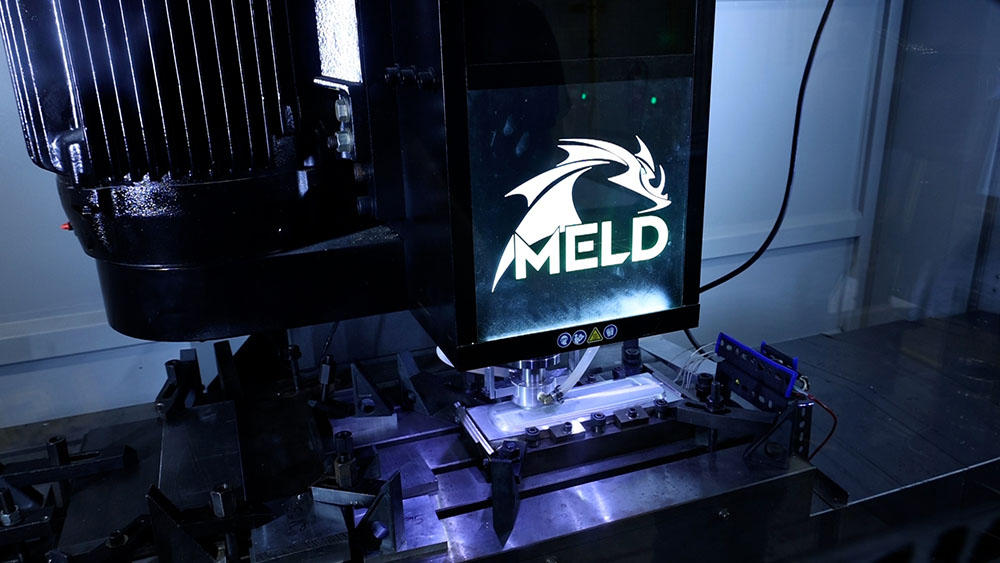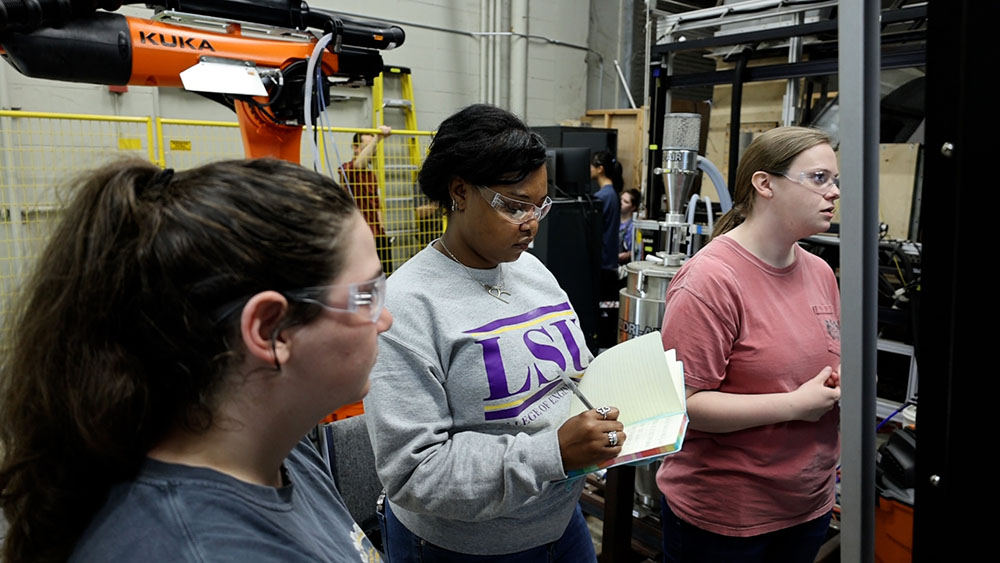LSU Mechanical Engineering Students’ Project Could Have Industry Implications
May 3, 2023
 BATON ROUGE, LA – As part of its senior capstone design project, a team of LSU mechanical
engineering students is working on a proof of concept that if successful, could have
application across several industries.
BATON ROUGE, LA – As part of its senior capstone design project, a team of LSU mechanical
engineering students is working on a proof of concept that if successful, could have
application across several industries.
The group is using an additive manufacturing process called MELD, which combines pressure and friction to deform metal without it fully melting. The objective is to design a way to embed a conductor in metal.
“MELD is a relatively new process with growing demand,” said Karli Beck, a senior from Prairieville, La. “As of right now, the technology is still being tested in order to determine the best application for [it]. Being able to embed a conductor into a metal component will provide valuable protection for the conductor that would reduce the chance of wire damage.
“The goal of the project was to determine if this was even possible to accomplish with a single machine and if the process developed was the most time- and cost-efficient way to achieve this result.”
Because of the high temperatures of the MELD machine—750 F—copper wire wrapped in mica and fiberglass insulation was used as the conductor. After performing some basic analysis, the methods that the team decided were feasible and most likely to succeed were tested on a small scale, revealing several ways of embedding a working conductor are possible. After the MELD process was finished, each conductor was tested for continuity and to ensure that it was not conducting with the part itself.
Now, the different methods are being assessed to determine the most efficient one based on manufacturing time and cost. One of those assessments involves testing the mechanical strength of the part holding the conductor.
“To examine the mechanical strength, the part will be subjected to two types of testing—bending and torsion, said Randi McCarty, a senior also majoring in Spanish from Dallas. “Using the MTS Landmark Hydraulic Testing Machine on campus, we will be able to perform these tests and compare them to the analysis performed in the previous semester. Additionally, the team designed components that fit into the top and bottom clamps of the machine and pieces that are able to hold the part in place. From the test results, we will be able to find the yield strength, as well as the percent change compared to our benchmark.”
 One side effect of the project is that the team members were given an effective introduction
to additive manufacturing, as well as the new MELD technology. It’s something that
will position them well for the workforce.
One side effect of the project is that the team members were given an effective introduction
to additive manufacturing, as well as the new MELD technology. It’s something that
will position them well for the workforce.
“This project allowed me to build various skills I haven’t had much experience in in the past, including CAD modeling, running Finite Element Analysis (FEA), and how to create manufacturing drawings—all of which I can use in the industry,” said Mason Pesson, a senior mechanical engineering major from Lafayette, La.. “Additionally, I learned a lot about additive manufacturing processes while working on this project. With additive manufacturing becoming more and more popular, I now have a solid background on this process, which is likely to become a norm in the industry very soon.”
The capstone design team is comprised of Pesson; McCarty; Justin Stevens, mechanical engineering major from Baton Rouge; Elizabeth Favret, mechanical engineering major from Kenner, La.; Beck; and Chris Pugh, mechanical engineering major from Baton Rouge.
Like us on Facebook (@lsuengineering) or follow us on Twitter and Instagram (@lsuengineering).
###
Contact: Joshua Duplechain
Director of Communications
225-578-5706
josh@lsu.edu